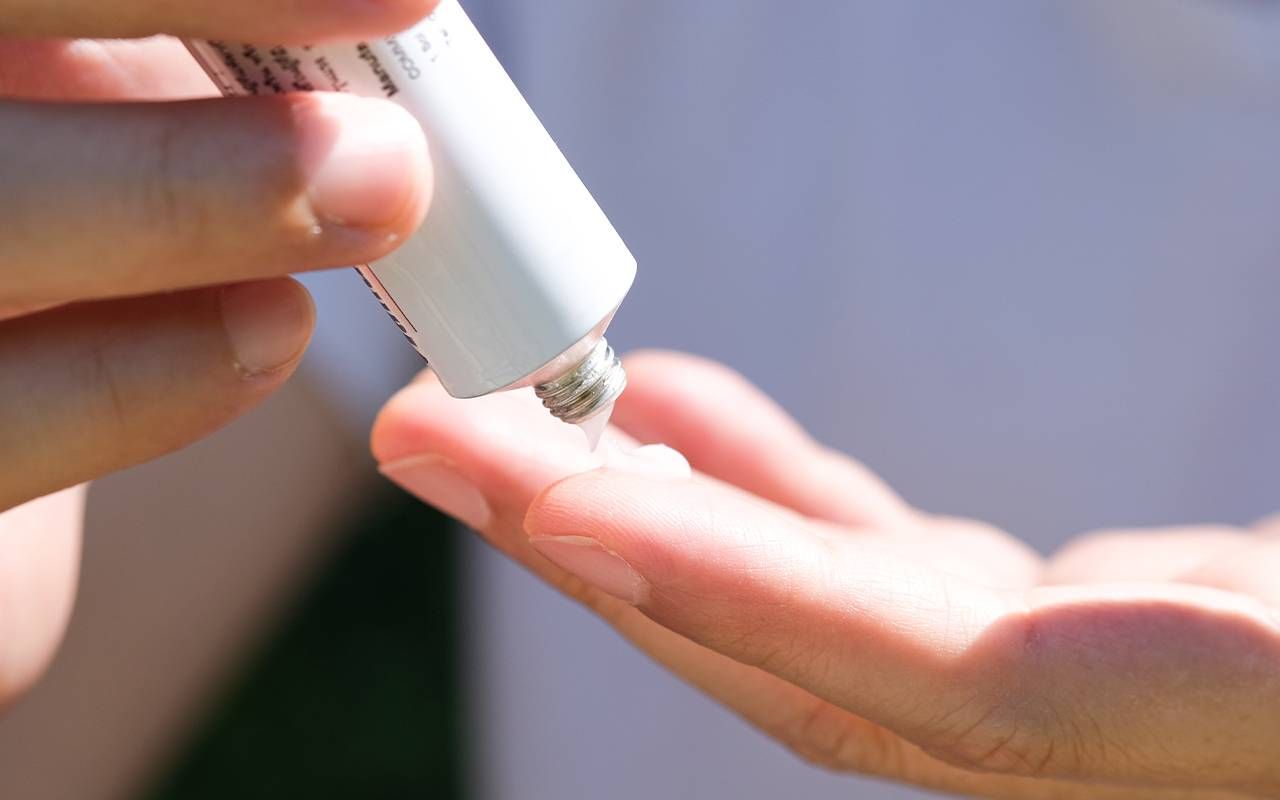How Topical Steroid Withdrawal Can Cause Red Skin Syndrome
It's tempting to overuse creams or ointments to get relief from pain and itching, but there is a risk of consequences
Steroid medication is the number one treatment for multiple skin disorders. It is well known for treating problematic skin conditions and painful symptoms like burning, itching and blistering.
However, when stopping the use of a steroid cream or ointment, it's essential to follow an incremental decrease in dosage, or the body may react adversely with a topical steroid withdrawal syndrome (TSWS).

Steroid creams can be a huge relief to inflamed and irritated skin. Topical corticosteroids are the primary treatment for many inflammatory skin conditions such as psoriasis, atopic dermatitis, eczema, acne, hives or rash.
Steroid creams can be a huge relief to inflamed and irritated skin.
It's a good bet that most American households have some form of steroid ointment in their bathroom drawer, either an over-the-counter product or a prescription strength medication.
The benefits of these creams are well known. Rub it on the affected area, and it usually works quickly to reduce the irritating symptoms. The skin's inflammatory response to a bug bite, the sun, or an autoimmune reaction often causes skin problems. Corticosteroids are a highly effective anti-inflammatory agent.
In addition, when the swelling under the skin recedes, so does the painful itching, burning and redness. But, like all medications, there are risks and side effects to consider when using a steroid.
Types of Topical Steroids
Topical use means absorbing medicine through the skin or the mucous membranes. These come in a cream, ointment, gel, or foam. The fact that steroid ointments are soothing make them a risk for overuse on irritated skin.
Like all medications, there are risks and side effects to consider when using a steroid.
The standard prescribed dose is "one to two times a day to the affected area," but if itching is relieved for only a short time, the temptation to double or triple the dosing is understandable. Unfortunately, the problem with doing this is compounded. Not only are you taking a risk by increasing the recommended dose, but you're also increasing the chance of a reaction from steroid withdrawal.
What Causes Steroid Withdrawal?
A "titration schedule" is ordered to discontinue the drug safely when a physician prescribes a steroid for a patient's treatment. This tapering schedule allows the body to adjust and the immune system to return to normal after the immunosuppressive steroid load to the system.
Without slowly decreasing the steroid dose, mainly if used for a long time, stopping the medicine can cause metabolic problems. Further, when used topically for skin issues, it can have a rebound effect of inflaming the skin and worsening its condition.
With chronic use, such as treating eczema or psoriasis, skin that hadn't been treated with the cream can become affected. The larger the dose (whether in strength, frequency or amount of ointment applied to the affected skin area), the higher the risk of experiencing withdrawal symptoms.
Are Topical Steroids Risky Medicine?
Of course, all medications have the chance of causing potential side effects, but steroid use has a compounded risk of overusing and abruptly stopping the medicine.
The fact that steroid ointments are soothing makes them a risk for overuse on irritated skin.
Following the doctor's orders closely and understanding the importance of safe dosing is critical to safe topical steroid use. The "fingertip unit" (or FTU) indicates the amount of cream needed. It's easy to use too much if you need help understanding the amount to apply to the affected area.
There are numerous variables to using topical steroids. Discussing the treatment plan with a health professional and understanding corticosteroids' role in treating skin disorders is the first step to preventing TSWS.
The Many Variables of Topical Steroid Usage
- Dose: Is it over the counter or prescribed by the doctor, and is there more than one medication used?
- Frequency: How often is the medication applied, following the prescription, or increasing the frequency for improved relief?
- Area of Application: What is the area of skin treated, and is it expanding or decreasing?
- Duration of treatment: Is this a chronic skin condition, and is steroid use continued for weeks, months or years?
- Titrating dose: Is the steroid being decreased before discontinuing?
What is Red Skin Syndrome?
Red Skin Syndrome Topical Steroid Withdrawal Syndrome is also known as Red Skin Syndrome (RSS). This syndrome can range from mild and short-lived to devastating and lasting over a year.
The risk of TSWS increases with the steroid dose concentration, how often the cream is used, and to what extent the application is on the body.
Following the doctor's orders closely is critical to safe topical steroid use.
RSS is precisely as it sounds: the skin develops a bright red rash that spreads from the affected area that was treated. The rash is excruciating. It itches, burns and can become raw and weeping. People who have suffered from this withdrawal phenomenon have described life-changing debilitation.
Leaving the house becomes unbearable; even getting out of bed is painful when the skin is flared up. Wound dressings and thickly slathered salves cover the areas of severe sloughing and drainage; healing can be a long and challenging process. Moreover, some people have to use steroids to heal from their steroid withdrawal.
TSWS has become more prevalent in dermatology patients on long-term topical steroids. This has been termed steroid addiction because of the chronic need for medication to control the ongoing skin condition. When these patients try to come off, steroid withdrawal syndrome occurs.
Nevertheless, many doctors have not recognized TSWS as an accurate diagnosis. This is possibly due to the underlying conditions of eczema and psoriasis, making it challenging to determine withdrawal versus a flare-up causing the symptoms.
More research is needed as this devastating condition occurs more frequently and is well documented in publications from organizations such as The National Eczema Association.
Many people have been sharing their personal stories and obtaining support online from these groups like them. Knowing that you aren't alone when you are suffering from TSWS is encouraging, and seeing the results of others' return to normalcy offers hope for healing.


